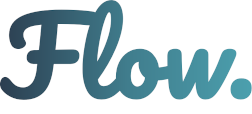Flow packs in a bunch of features that you'll probably like:
- Use named parameters, wildcards and (optionally) regexp patterns in your routes.
- Create route groups which use different middleware (a bit like chi).
- Customizable handlers for
404 Not Foundand405 Method Not Allowedresponses. - Automatic handling of
OPTIONSandHEADrequests. - Works with
http.Handler,http.HandlerFunc, and standard Go middleware. - Zero dependencies.
- Tiny, readable, codebase (~160 lines of code).
$ go get github.com/alexedwards/flow@latest
package main
import (
"fmt"
"log"
"net/http"
"github.com/alexedwards/flow"
)
func main() {
// Initialize a new router.
mux := flow.New()
// Add a `GET /greet/:name` route. The : character is used to denote a
// named parameter in the URL path, which acts like a 'wildcard'.
mux.HandleFunc("/greet/:name", greet, "GET")
err := http.ListenAndServe(":2323", mux)
log.Fatal(err)
}
func greet(w http.ResponseWriter, r *http.Request) {
// Use flow.Param() to retrieve the value of the named parameter from the
// request context.
name := flow.Param(r.Context(), "name")
fmt.Fprintf(w, "Hello %s", name)
}mux := flow.New()
// The Use() method can be used to register middleware. Middleware declared at
// the top level will used on all routes (including error handlers and OPTIONS
// responses).
mux.Use(exampleMiddleware1)
// Routes can use multiple HTTP methods.
mux.HandleFunc("/profile/:name", exampleHandlerFunc1, "GET", "POST")
// Optionally, regular expressions can be used to enforce a specific pattern
// for a named parameter.
mux.HandleFunc("/profile/:name/:age|^[0-9]{1,3}$", exampleHandlerFunc2, "GET")
// The wildcard ... can be used to match the remainder of a request path.
// Notice that HTTP methods are also optional (if not provided, all HTTP
// methods will match the route). The value of the wildcard can be retrieved
// by calling flow.Param("...").
mux.Handle("/static/...", exampleHandler)
// You can create route 'groups'.
mux.Group(func(mux *flow.Mux) {
// Middleware declared within in the group will only be used on the routes
// in the group.
mux.Use(exampleMiddleware2)
mux.HandleFunc("/admin", exampleHandlerFunc3, "GET")
// Groups can be nested.
mux.Group(func(mux *flow.Mux) {
mux.Use(exampleMiddleware3)
mux.HandleFunc("/admin/passwords", exampleHandlerFunc4, "GET")
})
})- Conflicting routes are permitted (e.g.
/posts/:idandposts/new). Routes are matched in the order that they are declared. - Trailing slashes are significant (
/profile/:idand/profile/:id/are not the same). - An
Allowheader is automatically set for allOPTIONSand405 Method Not Allowedresponses (including when using custom handlers). - Once the
flow.Muxtype is being used by your server, it is not safe to add more middleware or routes concurrently. - Middleware must be declared before a route in order to be used by that route. Any middleware declared after a route won't act on that route. For example:
mux := flow.New()
mux.Use(middleware1)
mux.HandleFunc("/foo", ...) // This route will use middleware1 only.
mux.Use(middleware2)
mux.HandleFunc("/bar", ...) // This route will use both middleware1 and middleware2.Bug fixes and documentation improvements are very welcome! For feature additions or behavioral changes, please open an issue to discuss the change before submitting a PR.
The pattern matching logic for Flow was heavily inspired by matryer/way.



